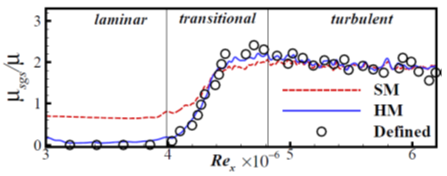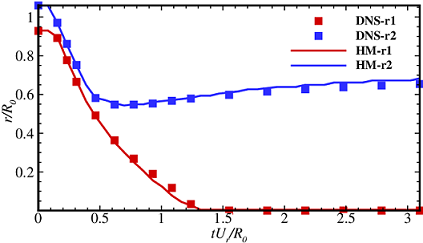- Home >> News >> Research Progress
Research Progress
Research progress in helical turbulence
The definition of helicity is the scalar product of velocity and vorticity, and the helical turbulence refers to a turbulent status without zero helicity. Helical turbulence is common in natural phenomena like tornado and typhoon, and engineering flows like aero-engine and centrifugal pump. As the last milestone of the Euler equation, the discovery of the conservation law of helicity provides a new perspective for exploring the spatio-temporal evolution of turbulent flows systematically. As one of the only two quadratic inviscid invariances in three-dimensional turbulence, the Noether theorem determines the multi-scale distributions and nonlinear interactions of helicity.
In the past few years, Changping Yu (Research Group of Compressible Turbulence and Transition of Institute of Mechanics, Chinese Academy of Sciences) paid much attention to the theory and LES modeling of helical turbulence and made a series of research progress in the aspect of physical mechanism and turbulence modellings.
In theories, he proposed that there exist dual channels of helicity cascade, and this theory provides a new perspective of vortex dynamics of turbulent cascade and is used to explain the inverse energy cascade. For the theory defect of the classical turbulent cascade without considering broken symmetry, he proposed a theory of scale locality and verified that statistical laws are still universal under the influence of broken symmetry. He extended the classical helicity cascade theory in the frame of incompressible turbulence to compressible turbulence, and mainly focused on the pressure term which destroys the conservative characteristics of the governing equation of helicity in compressible turbulence.

Figure1. The ensemble averages of energy flux conditioned on the first and second channel of helicity cascade.

Figure2. The ensemble averages of scale transition function of kinetic energy (a) and helicity (b) with different filter width.
In modellings and methodology of LES, basing on the above helicity cascade theory, he derived a new LES modelling (HM). The new LES modelling could detect laminar and turbulent flows automatically and has been employed to some typical engineering issues, such as compressible boundary layer with spatial transition and turbulence in high-speed vehicles, turbulent mixing resulted from interface instability in inertial confinement fusion, etc.

Figure3. The subgrid-scale eddy viscosity in compressible plate boundary layer.

Figure4. The time evolution of mixing width in Richtmyer-Meshkov instability in spherical geometry.
The above research progresses have been published in some international journals, including J. Fluid Mech., Phys. Fluids, Phys. Rev. E, Phys. Rev. Fluids. These works were supported by the National Key Research and Development Program of China (2019YFA0405300, 2016YFA0401200), and the National Natural Science Foundation of China (NSFC Grant No. 91852203)
